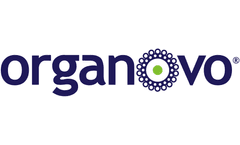Bioprinting Process Articles & Analysis
6 articles found
It provides a place for the cells to grow and helps to maintain their shape during the printing process. Common hydrogels used in bio-ink include alginate, collagen, and hyaluronic acid. Bioactive factors: These are growth factors, nutrients, and other signaling molecules that can help the cells to survive, proliferate, and differentiate into the desired tissue type. How Does ...
ByMatexcel
The Animal-Free Cultivated Meat Startup Landscape Here’s the full list in alphabetical order: Aleph Farms (Israel, 2016, beef) — this crew are planning on cultivating their steaks in space; their ideas are literally out of this world (famous for getting the first ever head of a government to try cultivated meat) Alife Foods (Germany, 2019, beef) — consumer-first and ...
The triple-cell layered lung model was realized through high-precision patterning of multiple cell-laden biomaterials printed directly into culture dishes, enabled by the combination of multiple drop-on-demand 3D bioprinting printheads in the same process, alternating collagen layers with polyvinylpyrrolidone (PVP) bioink embedding human lung epithelial cells, ...
ByRegenhu
Utilization of a bioprinter allows for the generation of large numbers of uniform and highly reproducible organoids in reduced time (approximately 20x faster) compared to manual processes. Treatment of bioprinted kidney organoids cultured in conventional 6-well format with doxorubicin exhibited concentration-dependent morphological changes ...
Publication Summary: The growing global incidence of NASH mirrors the availability of nutrients. Over-nutrition also results in insulin resistance and type-2 diabetes, which are often co-morbidities associated with NASH and are known to drive more adverse outcomes. MSDC-0602K, a modulator of the mitochondrial pyruvate carrier (MPC), is in clinical trials as a potential treatment for NASH. ...
Sichuan Revotek is a Chinese biotechnology firm that developed a 3D bioprinter back in 2015 which prints using stem cell-based bio ink, and it has now succeeded in printing out actual living, functioning blood vessels out of living stem cells in a Rhesus monkey. ...





